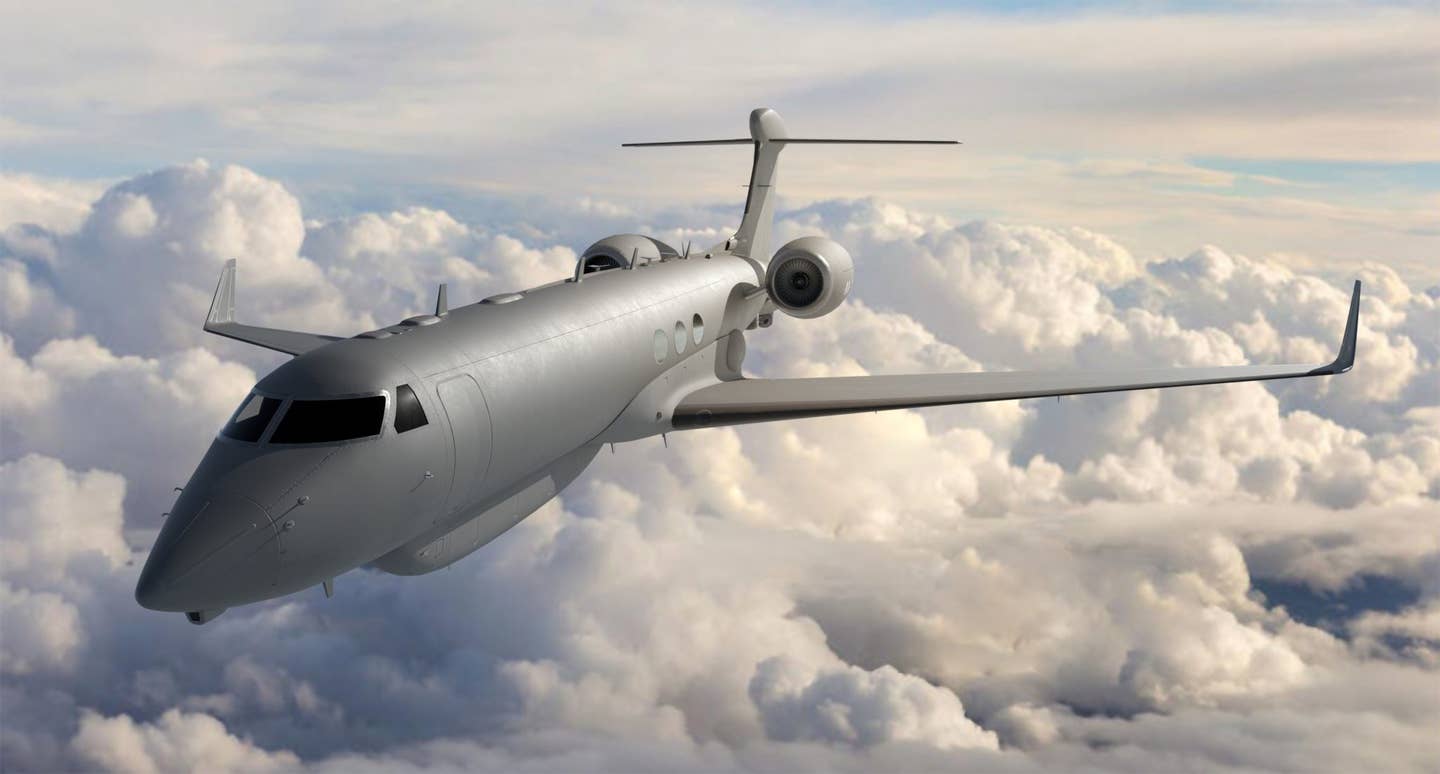Australia has been aggressively strengthening its combat capabilities and modernizing its military in the face of China’s growing threats. Amid Australia-China tensions, Canberra has unveiled its advanced Electronic Warfare Aircraft MC-55 Peregrine, which could be inducted shortly into the Royal Australian Air Force.
Caught ‘Red-Handed’ – Australia Accuses China Of Military Aggression As PLA Navy Spy Ship Gets Intimidating Close
Australia’s newest intelligence, surveillance, reconnaissance, and electronic warfare aircraft, a heavily modified variant of the Gulfstream G550 commercial jet, has been photographed for the first time.
The aircraft, known by the Royal Australian Air Force (RAAF) as the MC-55A Peregrine, was sighted flying from Gulfstream’s Savannah, Georgia facility. Photographer Aaron Perlupo, who goes by the handle @aarons airplanes on Instagram, shared a photo of the aircraft with The War Zone.
The Australian government had awarded L3 Technologies a contract to acquire four modified Gulfstream G550 planes with next-generation airborne electronic warfare (EW) capability.

The contract is worth over $1 billion, and L3 is required to deliver the aircraft with an integrated mission system that includes the most up-to-date EW capabilities, according to Air Force Technology.
The MC-55A Peregrine program began as early as 2017, and the aircraft is expected to be included in Australia’s joint combat networks. This will allow the aircraft to serve as a critical link between platforms, including the F-35A Joint Strike Fighter, E-7A Wedgetail, EA-18G Growler, Navy surface vessels, and amphibious assault ships as well as ground assets.
Powered By ‘Flurry Of Explosions’, China Claims Testing A Hypersonic Air-Breathing Engine To Propel Its Missiles, Fighters
L3 Technologies chairman, CEO and President Christopher Kubasik said in 2019: “As business jets are increasingly utilized for EW purposes, we have invested in miniaturizing our capabilities to deliver new resources for our customers. Australia is a very important market for L3, and we look forward to a long and productive partnership with the RAAF and the local supplier base in support of the Peregrine program.”
The induction of an advanced Electronic Warfare Aircraft becomes critical to counter the enhanced presence of the PLA in the Pacific, especially with the security pact signed between Solomon Island and China, which has induced fears of a Chinese military base springing up just about 2,000 kilometers from Australia.
The work on the aircraft includes installing a self-protection suite and ground-based data processing systems and aircraft modifications to fit mission systems and secure communications equipment.
The purchase is expected to improve naval, air, and land troops’ electronic warfare support for operations in complicated electromagnetic settings.
The photographs give some insights into what the functioning of the aircraft would be like, even though there has been no official detailed information from the RAAF.
Australia’s MC-55 Peregrine
The photos reveal that the airframe of the EW aircraft is covered in antennas and has a noticeable belly “canoe” that houses additional sensors. It is equipped with “airborne intelligence, surveillance, reconnaissance, and electronic warfare” mission systems.
The presence of a noticeable green tint on the aircraft fuselage indicates that it is not yet finished or, at the very least, has not been painted in its final color.
A dorsally mounted satellite communications antenna farm and a massive Satcom antenna shroud on the top of the vertical stabilizer are notable elements of Australia’s unique configuration.
The MC-55A variant for Australia lacks the cheek fairings that house active electronically scanned array radars found on the G550’s conformal early warning (CAEW) versions, noted The War Zone.
The Australian jet has bulbous tail cone housing identical to the CAEW’s and what appears to be an integrated electro-optical infrared (EO/IR) turret below the tail; however, it could alternatively be another dome with an emitter within. A tell-tale antenna farm can be seen on the underside of the plane, which is used for electronic and communications intelligence gathering and communications relay work.
Its missions are anticipated to include Electronic warfare (EW), Signals intelligence (SIGINT), and Intelligence, Surveillance, and Reconnaissance (ISR). This mission description fits in with Australia’s larger attempts to improve its Electronic Warfare and ISR capabilities as part of a broader modernization program.
Currently, the Royal Australian Air Force operates the P-8A Poseidon, E-7A Wedgetail, AP-3C Orion and, the MQ-4C Triton Unmanned Aircraft System for IRS missions and keeping an eye out on the adversarial activities in its immediate region and beyond.
The MC-55A’s mission’s electronic attack component is very noteworthy. It’s reasonable to assume that the type used the rear AESA array from the CAEW and combined it with a strong AESA type in the canoe, allowing it to launch electronic attacks at long ranges while also gathering intelligence.
The ability to push data off the collecting platform through high-bandwidth satellite data link in near real-time for distribution, as well as the miniaturization of components and the introduction of powerful AESA arrays, have certainly allowed an aircraft like the MC-55A to become a reality.
Australia, the United States, and its allies are actively investing in systems that can monitor Chinese actions in the Pacific. P-8s from Australia and RC-135V/W Rivet Joint surveillance planes from the United States have been monitoring the Chinese military in the region for years.
These and other platforms are critical because they may provide a picture of China’s electronic order of battle at any given time. The addition of the MC-55A would add more teeth to Australia’s intelligence gathering and combat preparedness.
- Contact the author at sakshi.tiwari9555@gmail.com
- Follow EurAsian Times on Google News